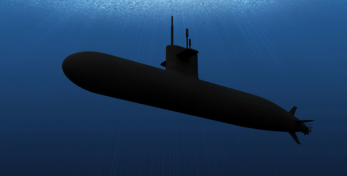By Dr. Stephen Schwalbe
Faculty Member, Public Administration at American Public University
Since 2000, California has suffered some of its worst droughts since state climate record keeping began in the late 1800s.
The 2001-2002 rainy season in Southern California was the driest on record. The drought of 2011-2014 was the worst in state history. As of May 2015, the drought has worsened and continued.
Current Water Conservation Efforts Are Not Sufficient
California implemented numerous water conservation efforts to counteract the lack of fresh water. Eventually, those efforts will not be enough if the drought continues. So what is Plan B in case of emergencies?
There are three general solutions to water shortages: water conservation, water transfer from places with abundant water and desalination. California has already put water conservation practices into effect statewide.
As for transferring water, this measure is already in place from Northern to Southern California. Water is also transferred from the Colorado River to Southern California, where the Colorado River provides 80% of necessary water to Southern California.
However, there are approximately 25 million people living in Southern California who need water. That leaves the water desalinization option.
Desalination of Sea Water Is a Viable, But Costly Option
Desalination is the process of removing dissolved salts from water to create potable water. Around 150 countries rely on 17,000 desalination plants to produce over 211 billion gallons of fresh water daily.
Seawater is the primary source of water for 50 percent of these plants. Because of its steep costs and environmental concerns such as residual brine, desalinization of seawater is the last option.
There are three primary desalinization plants in California today. One plant is in Santa Barbara and provides 30% of the city’s water needs.
In Carlsbad, a city along the California coast between Los Angeles and San Diego, the largest desalinization plant in the country is about to go online, at a cost of $1 billion. This plant will produce 7 percent of San Diego County’s daily fresh water.
The third plant is scheduled to be built by 2020 in Monterey County, south of San Francisco. It should meet the water needs for three cities in the county.
These plants still leave a large number of Californians vulnerable to a water shortage crisis. In addition, these desalinization plants are susceptible to disruption from an earthquake or tsunami, which happened at Japan’s Fukushima nuclear power plant disaster in March of 2011.


